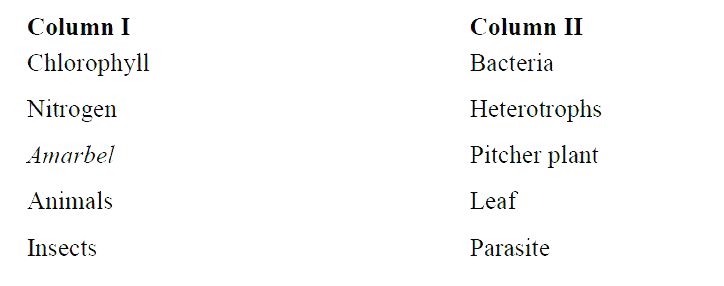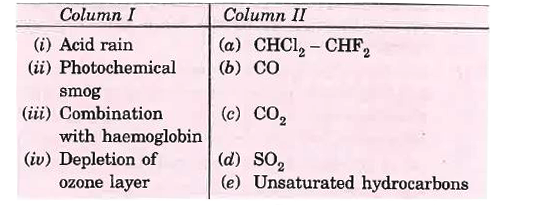Match the terms given in column I with those given in column II :
The correct Answer is:(i) c (ii) b (iii) e (iv) a (v) d
Step by step video, text & image solution for Match the terms given in column I with those given in column II : {:(,"Column I",,,"Column II"),((i),"Fossil",,(a),"A famous evolutionist"),((ii),"A theory of evolution",,(b),"Survival of the fittest"),((iii),"Probable ancestor of birds",,(c),"Petrified remains of prehistoric life"),((iv),"Charles Darwin",,(d),"Father of genetics"),((v),"Gregor Mendel ",,(e),"Archaeopteryx"):} by Biology experts to help you in doubts & scoring excellent marks in Class 10 exams.
Updated on:21/07/2023Topper's Solved these Questions
- HEREDITY AND EVOLUTIONBook:LAKHMIR SINGH & MANJIT KAURChapter:HEREDITY AND EVOLUTIONExercise:Questions Based on High Order Thinking Skills (HOTS)
Explore 6 Videos
- HEREDITY AND EVOLUTIONBook:LAKHMIR SINGH & MANJIT KAURChapter:HEREDITY AND EVOLUTIONExercise:Very short Answer Type Questions
Explore 1 Video
- CONTROL AND COORDINATION Book:LAKHMIR SINGH & MANJIT KAURChapter:CONTROL AND COORDINATION Exercise:Very Short Answer Type Questions
Explore 5 Videos
- HOW DO ORGANISM REPRODUCEBook:LAKHMIR SINGH & MANJIT KAURChapter:HOW DO ORGANISM REPRODUCEExercise:Exercise
Explore 23 Videos
Similar Questions
Knowledge Check
Match items given in Column I with those given in Column II
 AA = t, B= r, C = p, D = sBA = q, B = s, C = r, D = pCA = s, B= r, C = q, D = tDA = r, B = t, C = p, D = q
AA = t, B= r, C = p, D = sBA = q, B = s, C = r, D = pCA = s, B= r, C = q, D = tDA = r, B = t, C = p, D = qMatch the items in column I with those given in column II.
 Aa- I, b-iv, c-ii, d-iii, e-vBa-iv, b-ii, c-I, d-iii, e-vCa-iv, b-I, c-ii, d-iii, e-vDa-iv, b-I, c-iii, d-ii, e-iv
Aa- I, b-iv, c-ii, d-iii, e-vBa-iv, b-ii, c-I, d-iii, e-vCa-iv, b-I, c-ii, d-iii, e-vDa-iv, b-I, c-iii, d-ii, e-iv
Match the terms given in Column I with the units given in Column II.

View SolutionMatch the terms given in Column I with the items given in Column II.

View SolutionMatch the items of column I with those given in column II.
 .
.
View SolutionMatch the item given in Column I with those in Column II

View SolutionMatch the terms given in Column I with the compound given in Column II.

View SolutionMatch the terms given in Column I with the compounds given in Column II.

View Solution

 .
.